
PRESIDENT'S MESSAGE
Evidence and Excitement: Looking toward the Coming Year

Alan J. Christensen, PhD
Alan J. Christensen, PhD, Society of Behavioral Medicine President
I am honored to begin my term as President of the Society of Behavioral Medicine. I attended my first SBM meeting as a student in 1988 and have missed only one meeting since, in 1997, when the date coincided with the week my son Aaron was born. SBM has played a central role in my own professional development, as I know it has for many of you, and I am pleased to be able to give back to our Society in this manner.
There has never been a better time to help lead this organization. The Society is currently thriving and growing in so many ways. Recognition of the paramount role that behavior plays in promoting and maintaining health is at an all-time high and continues to grow. And as an organization, SBM's own health is strong. Like many of you I just returned from an inspiring Annual Meeting in New Orleans where registration numbers set a new Society record. Membership numbers are themselves the highest they have been in many years and are moving strongly upward. The Society's two journals, Annals of Behavioral Medicine (edited by Chris France), and the new Translational Behavioral Medicine (edited by Bonnie Spring) continue to grow in visibility and impact (Annals most recent impact factor of 3.98 puts it among a very elite group of behavioral medicine/health journals). And we have a strong management team headed by Amy Stone working 24/7 to serve members and make our organization stronger.
Despite these existing strengths there are many challenges we face as individual members and as an organization. Research funding grows increasingly tight threatening both the development of our next generation of investigators as well as the productivity and impact of our more senior scientists. Ensuring that our voice and central messages are heard in the increasingly crowded advocacy and policy arena is more essential than ever as purse strings tighten and as the political landscape ebbs and flows under us. And the reality that so many of us are doing "more with less", and are pulled in so many different directions professionally, makes it critical that an organization like SBM addresses member concerns and adds value to members professional lives.
The strong foundation of the Society puts it in a position to be able to stretch itself, promote its objectives, and serve its members, in ways that were previously not possible. As I embark on my term, many of my plans fall within a three-pronged focus. In the coming year I'll be working with Board members and other volunteers to continue successful efforts that have expanded our health policy and advocacy reach as well as our membership base. A new major focus for the year will be on health information technology. The application of electronic devices - such as mobile phones - to foster health behavior assessment and change, is expanding rapidly and I believe it essential that SBM and its members play a leadership role in furthering the intersections between behavioral medicine research and technology applications to health. Next year's annual meeting (March 20-23, 2013) will be in San Francisco, an ideal venue to promote the health technology focus and to further explore potential SBM/technology industry synergies. Margaret Schneider, our Program Committee Chair for 2013, will be working to develop a scientific program around the theme "Technology: the excitement and the evidence". As I write this, B.J. Fogg has accepted our invitation to deliver a keynote at next year's meeting. A well-known behavioral scientist and author, B.J. directs Stanford University's Persuasive Technology Lab where he is engaged in creating insights into how computing products can be designed to change people's beliefs and behaviors. BJ will be just one of many leading scientists and innovators talking about the intersection of technology and health at the annual meeting.
It is a particularly important time for SBM to have its voice heard in efforts to shape the research funding and health policy agendas. For the past year and a half the Public Policy Leadership Group, headed by Karen Emmons, has made significant progress toward building relationships with key legislative offices and supporting health-related federal legislation that advances core behavioral medicine principles. Moreover, SBM has joined with other organizations in advocating for increased NIH funding, protecting the Prevention and Public Health Fund, community transformation grants, and other relevant issues. The Health Policy Committee, headed by Paul Estabrooks, has continued its valuable efforts toward ensuring the incorporation of behavioral measures into electronic health records and, working with the Society for Research in Nicotine and Tobacco, developed a statement that supports inclusion of the 1-800 quit line on cigarette packages. In the coming year, the Committee will be developing policy statements - or briefs - focused on such topics as the importance of sleep for public health, health technology and behavioral medicine, and team science.
Brent Van Dorsten and his Membership Council are to be commended for implementing highly successful membership growth strategies. Our member numbers are strong getting stronger. In addition to growing the absolute size of our membership base, it's equally as important to ensure that the base is diverse with respect to member discipline and background. Such diversity has always been a unique characteristic of our multidisciplinary society and ensuring that the breadth of member diversity keeps pace with the increasing engagement of many disciplines (Nursing, Medicine, Engineering, Computer Science, to name just a few) in the health and behavioral medicine arena is essential to SBM's reach and impact. Finally, I will be working with the SBM Board of Directors to create greater leadership and engagement opportunities for members, especially new members or older members who have not played a leadership role in the past. This sort of broad engagement throughout the membership is not only a key to member retention but is essential to maintain a vital infusion of new ideas and new energy into the activities of our Society. One of the central existing ways that members can become involved in this way is through participation in one of SBM's special interest groups (SIG's). If you are not currently active in a SIG, I encourage you to consider joining one or more of these content-specific groups, as I think you will find SIG activity to be a perfect complement to the broader, cross-disciplinary SBM experience.
If you are an SBM member, I welcome your input on any of these issues and more. If you are new to SBM, I welcome any questions you may have about our organization and hope you will consider how SBM can add value to your own professional life.
Alan J. Christensen PhD
Alan-Christensen@uiowa.edu
Award Winners
Congratulations to the following 2012 Society of Behavioral Medicine
Achievement Awards recipients!
2011-2012 SBM President, Abby C. King, PhD, is pictured on the left in all awards photos.
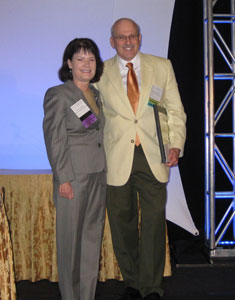 |
 |
| Distinguished Scientist Award Richard S. Surwit, PhD |
Alere Research to Practice Award Bonnie Spring, PhD, ABPP |
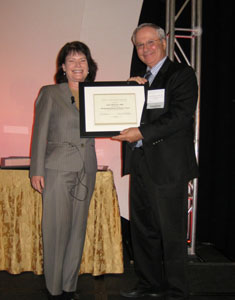 |
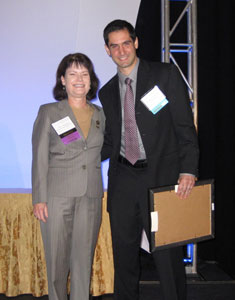 |
| Distinguished Research Mentor Award Mary Amanda Dew, PhD (not pictured) And Gary Morrow, PhD |
Early Career Investigator Award David M. Williams, PhD |
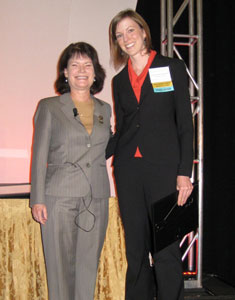 |
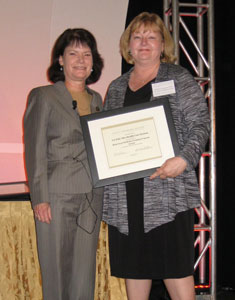 |
| Outstanding Dissertation Award Lisa M. Nackers, MS, MPH |
Excellence in Behavioral Medicine Training Program Award VA Palo Alto Health Care System |
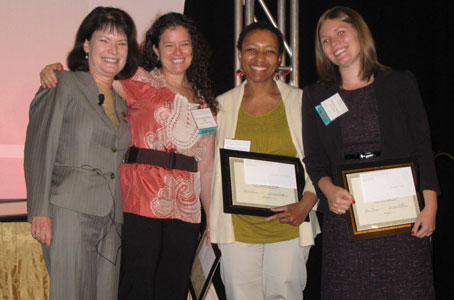 |
||
| Distinguished Student Awards | ||
| Travel Scholarship Elizabeth K. Seng, MS Stephanie L. Fitzpatrick, PhD |
Excellence in Research Leigh A. Phillips, MS Ann E. Caldwell Hooper, MS |
Excellence in Service Delivery Tanya Vishnevsky, BA |
| Not pictured: Leigh A. Phillips, MS and Tanya Vishnevsky, BA | ||

Fellows
(left to right)
Bradford W. Hesse, PhD
Sara J. Knight, PhD
Patricia L. Mabry, PhD
Peter A. Vanable, PhD
Kevin T. Larkin, PhD
Laura M. Bogart, PhD
Michael A. Diefenbach, PhD (not pictured)
Jeffrey T. Parsons, PhD (not pictured)
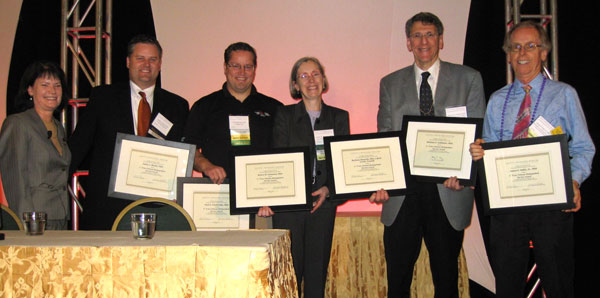
C. Tracy Orleans Distinguished Service
The Society of Behavioral Medicine recognizes the following individuals
for their hard work and dedication to the society.
(left to right)
Jamie L. Studts, PhD
Paul A. Estabrooks, PhD
Karen M. Emmons, PhD
Michael G. Goldstein, MD
James F. Sallis, Jr., PhD
Barbara Resnick, PhD, CRNP, FAAN, FAANP (not pictured)
Special Interest Groups (SIG) Awards
SBM congratulates the following recipients of these special awards given by the Special Interest Groups.
Aging SIG
SBM Aging SIG Award for Outstanding Student Research Abstract in Aging
Mauli Shah
Behavioral Informatics SIG
Poster Award
Kelly B. Filipkowski, PhD
Child and Family Health SIG
The Student Award for Outstanding Research in Child and Family Health
Amy E. Hughes
The Award for Outstanding Research in Child and Family Health
Andrew W. Hertel, PhD
Cancer SIG
Outstanding Student Award
Julia R. Van Liew, BA
Cancer SIGGIE
Deborah J. Bowen, PhD
Complementary and Integrative Medicine SIG
Complementary and Integrative Medicine Investigator Research Award
Gary Elkins, PhD, ABPP
Complementary and Integrative Medicine Student Research Award
Laurie E. Steffen, BA
Evidence-Based Behavioral Medicine SIG
Outstanding Student/Trainee Award in Evidence-Based Behavioral Medicine
Job G. Godino, MS
Health Decision Making SIG
Outstanding Trainee Abstract in Health Decision Making
Erin M. Walsh, MS
Multiple Health Behavior Change SIG
Multiple Health Behavior Change SIG Research Award
Shane N. Sweet, PhD
Multiple Health Behavior Change SIG Student Research Award
Erin N. Etzel
Pain SIG
Pain SIG Student Research Award
Kathryn Godfrey
Pain SIG Student Research Award Honorable Mentions
Teresa A. Lillis
Emily L. Zale
Physical Activity SIG
Physical Activity SIG Student Research Award
Deirdre Dlugonski, BS
Physical Activity SIG Local Innovator Award
School Health Connection Louisiana Public Health Institute
Special Recognition for Outgoing Chair
Brian C. Focht, PhD
Student SIG
Student SIG Research Award
Allyssa J. Allen
Stephanie M. Case
Andrea L. Hobkirk, MA
Emily L. Mailey, MS
Women's Health SIG
Outstanding Student Researcher in Women's Health Award
Anca Gaston, MA
2012 Annual Meeting Recap
Jamie L. Studts, PhD, 2011-2012 Program Committee Chair
Margaret L. Schneider, PhD, 2011-2012 Program Committee Co-Chair
 Congratulations to everyone involved in the 33rd Annual Meeting & Scientific Sessions of SBM; our Society established a new attendance record with over 1700 registrants for the meeting. We hope that everyone had a rewarding and enjoyable experience in New Orleans, and we look forward to achieving new heights in 2013 and beyond. Consistent with the meeting theme, "Engaging New Partners and Perspectives," SBM President Abby C. King, PhD, and the Program Committee developed a program that encouraged attendees to seek new connections with colleagues from different disciplines, consider opportunities to collaborate with community partners, and contemplate the implications of our work for policy and dissemination beyond our field. We hope that the meeting assisted in this process, and we were thrilled by the enthusiasm demonstrated by presenters and attendees throughout the meeting. In addition to the science, we hope that everyone enjoyed the music at the Wednesday evening poster session as well as the rich food and culture of New Orleans, including the French Quarter Festival.
Congratulations to everyone involved in the 33rd Annual Meeting & Scientific Sessions of SBM; our Society established a new attendance record with over 1700 registrants for the meeting. We hope that everyone had a rewarding and enjoyable experience in New Orleans, and we look forward to achieving new heights in 2013 and beyond. Consistent with the meeting theme, "Engaging New Partners and Perspectives," SBM President Abby C. King, PhD, and the Program Committee developed a program that encouraged attendees to seek new connections with colleagues from different disciplines, consider opportunities to collaborate with community partners, and contemplate the implications of our work for policy and dissemination beyond our field. We hope that the meeting assisted in this process, and we were thrilled by the enthusiasm demonstrated by presenters and attendees throughout the meeting. In addition to the science, we hope that everyone enjoyed the music at the Wednesday evening poster session as well as the rich food and culture of New Orleans, including the French Quarter Festival.
As in recent years, the meeting was kick-started on Tuesday by an outstanding pre-conference session sponsored by the National Institutes of Health and SBM and organized by Susan M. Czajkowski, PhD, and Christine M. Hunter, PhD. The well-attended session, "Innovations in Translational Behavioral Science: New Concepts, Study Designs and Implementation Strategies," addressed important issues in the design, implementation and analysis of early phase trials. This session was complemented by a robust array of workshops, seminars, and SIG course offerings on Wednesday morning and afternoon that were designed to help attendees develop new clinical and research skills.
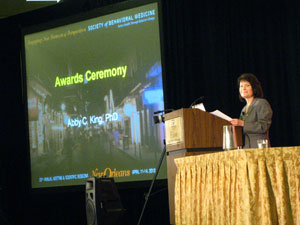 On Thursday morning, John P. A. Ioannidis, MD, DsC, Director of the Stanford Prevention Research Center, delivered the opening Keynote Address, discussed his data and perspectives regarding the strengths and limitations of predictive-preventive medicine and challenged attendees to think critically about the methodological challenges and clinical implications of predictive medicine. Also on Thursday, Kathryn H. Schmitz, PhD, MPH, FACSM, of the University of Pennsylvania Perelman School of Medicine, delivered a Master Lecture addressing the dissemination of evidence-based exercise programs into cancer care. The second Master Lecture on Thursday featured Steven H. Woolf, MD, MPH, Director of the Center on Human Needs at Virginia Commonwealth University, who addressed community involvement and citizen-centered health promotion in efforts to foster healthy behavior and promote well-being. On Thursday evening, SBM President Abby C. King, PhD, Professor of Health Research, Policy and Medicine at the Stanford University Medical School, delivered her 2012 Presidential Keynote Address, "Behavioral Medicine in the 21st Century: Transforming "the Road Less Traveled" into the "American Way of Life." She dazzled us all with her creative, insightful, motivating, and engaging presentation highlighting how behavioral medicine could create a healthier world.
On Thursday morning, John P. A. Ioannidis, MD, DsC, Director of the Stanford Prevention Research Center, delivered the opening Keynote Address, discussed his data and perspectives regarding the strengths and limitations of predictive-preventive medicine and challenged attendees to think critically about the methodological challenges and clinical implications of predictive medicine. Also on Thursday, Kathryn H. Schmitz, PhD, MPH, FACSM, of the University of Pennsylvania Perelman School of Medicine, delivered a Master Lecture addressing the dissemination of evidence-based exercise programs into cancer care. The second Master Lecture on Thursday featured Steven H. Woolf, MD, MPH, Director of the Center on Human Needs at Virginia Commonwealth University, who addressed community involvement and citizen-centered health promotion in efforts to foster healthy behavior and promote well-being. On Thursday evening, SBM President Abby C. King, PhD, Professor of Health Research, Policy and Medicine at the Stanford University Medical School, delivered her 2012 Presidential Keynote Address, "Behavioral Medicine in the 21st Century: Transforming "the Road Less Traveled" into the "American Way of Life." She dazzled us all with her creative, insightful, motivating, and engaging presentation highlighting how behavioral medicine could create a healthier world.
The Friday morning Keynote Address was presented by Janet L. Collins, PhD, Associate Director for Program at the Centers for Disease Control and Prevention. Dr. Collins detailed CDC initiatives to transform public health using data-driven programs and described examples of scaling interventions to achieve measurable health improvements. Also on Friday, Margaret A. Chesney, PhD, Distinguished Professor of Medicine and Director of the Osher Center for Integrative Medicine at the University of California, San Francisco, presented the 2012 Distinguished Scientist Master Lecture entitled, "Integrative Medicine: Fraud or Frontier and Why Behavioral Medicine May Care," that provided an overview of integrative medicine and its linkages with behavioral medicine. Jeffrey N. Keller, PhD, the Hibernia National Bank/Edward G. Schlieder Professor and Director of the Institute for Dementia Research and Prevention at the Pennington Biomedical Research Center, offered the second Master Lecture on Friday afternoon. Dr. Keller's address outlined key opportunities for interdisciplinary collaborations to promote healthy aging by exploring complex relationships between behavior, nutrition, movement and cognition.
The President's Keynote Panel on Obesity, a special addition to this year's meeting, was held on Friday evening and featured Russell E. Glasgow, PhD, Thomas N. Robinson, MD, MPH, Deborah F. Tate, PhD, and Shiriki Kumanyika, PhD, MPH. The session examined diverse perspectives on the obesity epidemic, employed some technological enhancements to facilitate audience involvement, and created opportunities for a longer-than-usual question and answer session to facilitate an exchange of ideas among panelists and attendees. The presentations highlighted innovative ideas for obesity prevention and treatment, including clinic-based stealth interventions, technology-driven interventions, as well as policy-level interventions.
 The Saturday morning Master Lectures highlighted the meeting theme by addressing the roles of dissemination and technological innovation in promoting health and well-being. Kate Lorig, DrPH, Professor Emeritus in the Department of Medicine at Stanford University School of Medicine, delivered a policy-oriented Master Lecture regarding the scalability of interventions and the role of policy, financing, and other key ingredients involved in broad implementation. Also on Saturday morning, Kevin Patrick, MD, MS, Professor of Family and Preventive Medicine and Director of the Center for Wireless and Population Health Systems at the University of California, San Diego, discussed the development of technology-infused interventions to promote health in his Master Lecture. Dr. Patrick highlighted the value of collaborating with engineering disciplines in developing behavior change interventions that maximize the impact of available mobile, sensing, and networking technologies.
The Saturday morning Master Lectures highlighted the meeting theme by addressing the roles of dissemination and technological innovation in promoting health and well-being. Kate Lorig, DrPH, Professor Emeritus in the Department of Medicine at Stanford University School of Medicine, delivered a policy-oriented Master Lecture regarding the scalability of interventions and the role of policy, financing, and other key ingredients involved in broad implementation. Also on Saturday morning, Kevin Patrick, MD, MS, Professor of Family and Preventive Medicine and Director of the Center for Wireless and Population Health Systems at the University of California, San Diego, discussed the development of technology-infused interventions to promote health in his Master Lecture. Dr. Patrick highlighted the value of collaborating with engineering disciplines in developing behavior change interventions that maximize the impact of available mobile, sensing, and networking technologies.
The Career Development-focused Keynote panels on Saturday offered a new approach to closing the meeting. One Keynote Panel organized by C. Tracy Orleans, PhD, Judith K. Ockene, PhD, MEd, MA, and Lisa M. Klesges, PhD, addressed career trajectories in behavioral medicine, "Two Roads Diverged in a Yellow Wood . . . ": Roadmaps, Strategies, and Dialogue for Achieving your Behavioral Medicine Career Goals." The panelists, Melissa A. Clark, PhD, MS, James F. Sallis, Jr., PhD, and Gary G. Bennett, PhD, along with moderator, Dr. Orleans, discussed a range of perspectives and personal experiences regarding challenges and successes in managing their careers. In the second panel, Margaret L. Schneider, PhD, Bonnie Spring, PhD, ABPP, Robin J. Mermelstein, PhD, and Robert T. Croyle, PhD, addressed career issues related to team science and interdisciplinary research. In addition to panelist comments, both panels engaged attendees in an open exchange as a means of identifying both challenges and potential solutions to a range of career development issues.
To fulfill the meeting theme, the program included four Featured Symposia. The Featured Symposium on Thursday morning addressed policy-related initiatives regarding electronic health records, "Identifying, Assessing, and Acting Upon, Common Behavioral and Psychosocial Data Elements within Electronic Health Records." On Thursday afternoon, the Featured Symposium "Genetics, Genomics and Behavioral Medicine Interventions: Partnerships and Perspectives to Improve Transdisciplinary Intervention Research," examined innovative genetic and genomic parameters in the evaluation of interventions. The Friday morning Featured Symposium, "Uncovering Hidden Health Behaviors of the Mouth: How Oral Health is Relevant to Behavioral Medicine Research," highlighted potential opportunities for interdisciplinary collaboration with dental care providers and researchers. Finally, the Friday afternoon Featured Symposium sponsored by the American Cancer Society, "Evidence Based Solutions in Health Equity: Research and Policy Implications," focused attention on interventions to reduce cancer disparities.
 In addition to the integration of several new panel sessions into this year's program, a selected group of student members participated in a new mentored poster program. Students were selected based on scores received during the traditional abstract review process, and the awardees were extended the opportunity to discuss their poster with an SBM Fellow or senior member. Many thanks to our SBM Fellows and senior members who also volunteered to participate in this exciting new offering.
In addition to the integration of several new panel sessions into this year's program, a selected group of student members participated in a new mentored poster program. Students were selected based on scores received during the traditional abstract review process, and the awardees were extended the opportunity to discuss their poster with an SBM Fellow or senior member. Many thanks to our SBM Fellows and senior members who also volunteered to participate in this exciting new offering.
As Chair and Co-Chair, we have many to thank for the success of the meeting. First, we would like to thank (now former) SBM President Abby C. King, PhD, for her thoughtful guidance and encouragement throughout the process of developing the 2012 program. We would also like to extend our sincere gratitude to our colleagues on the Program Committee (Gary G. Bennett, PhD, Barbara Resnick, PhD, CRNP, FAAN, FAANP, Robin C. Vanderpool, MPH, DrPH, and Geoffrey C. Williams, MD, PhD) and the 2012 Annual Meeting Field Planners (Alan J. Christensen, PhD, Matthew P. Buman, PhD, Donald L. Chi, DDS, PhD, Elliot J. Coups, PhD, Kristi D. Graves, PhD, Eric B. Hekler, PhD, Sara J. Knight, PhD, Shelby L. Langer, PhD, and Jennifer J. Otten, PhD, RD) who played critical roles in the development and execution of the program. We also wish to thank the Track Chairs and all the reviewers for their many hours of effort in reviewing and guiding the selection of abstracts for presentation. Additionally, the Program Committee would like to acknowledge the efforts of Sean M. Ransom, PhD, and the Local Arrangements Committee and thank them for doing such an outstanding job of providing a wealth of information about the New Orleans community, organizing several traditional SBM activities, and preparing the musical surprises that helped bring a bit of New Orleans into the meeting. Finally, and perhaps most importantly, we would like to recognize our outstanding partners and friends at EDI, including Amy Stone (Executive Director) and Holland LaFave (SBM Manager of Meetings and Education) who provided such sage advice and seemingly endless energy to organizing and implementing the meeting as well as the mission of SBM.
On behalf of the Program Committee, thanks to everyone for your contributions to the 2012 meeting, and we hope to see everyone in San Francisco in 2013.
Jamie L. Studts, PhD
2012 Program Co-Chair
Margaret L. Schneider, PhD
2012 Program Co-Chair
SBM Abstract Submission Process Demystified
Margaret L. Schneider, PhD, 2013 Program Committee Chair
As SBM Conference Program Co-Chair last year, I participated in the complex process that goes into planning and executing the annual meeting. It was very illuminating, and I realized how little I had actually known before about the decision-making process for selecting the proposals that are accepted for presentation at the conference, how the papers are grouped into sessions, when in the program specific presentations are scheduled, and so on. Discussions with SBM members confirmed that additional information about the process might be helpful, so the Editors of Outlook invited the Program Committee to contribute an article to this issue to help demystify the process.
To begin with, it might be best to review the chronology of the submission process. The call for abstracts comes out in June, at which time the on-line submission site is opened to receive abstracts. This site remains open until mid-September, at which time the on-line submission site closes. After that time, the only remaining opportunity for proposing a conference presentation is for the Rapid Communications Posters. Applications for Rapid Communications Posters are typically accepted from early November through early January. An important element of the conference program planning is that the review processes for the regular and Rapid Communications abstracts are completely independent. By the time that the Rapid Communications reviews begin, all of the submissions for the regular sessions have been reviewed. There is a separate Track Chair for the Rapid Communications abstracts, and these presentations will only be presented in poster format (acceptance rate in 2012: 91%).
Picking up the chronology of the reviews for the regular conference submissions, reviewing begins as soon as the on-line submission system closes in mid-September. Each abstract is assigned to a "Track" based on the submitter's choice. Each Track has a chair (or co-chairs for some of the larger tracks) who then assign the abstracts to 3 independent reviewers for scoring. Scores are submitted via an on-line system and are due by early October. The Track chair then reviews all the scores that have been submitted and adds his/her own comments, scores, and recommendations to those of the other reviewers. All reviewers are encouraged to include narrative comments to highlight reasons for the scores given. In particular, Track chairs are asked to provide comments when reviewers' scores are widely divergent.
All of the information from the Track chairs goes to the fantastic SBM management company whose staff manages the executive functions of SBM. Abstracts are ranked according to average scores. Using guidelines developed in previous years, the Program Committee adopts "cut-off" scores for poster-only submissions, as these are the most numerous. The thresholds may move a little each year, as we are always limited by the capacity of the particular hotel where we are holding the conference. The goal is to be inclusive and provide opportunities for investigators to present their research, which is one reason why this year, in San Francisco, we will be requiring a vertical format for posters. By moving to the vertical format, we will be able to maintain our usual number of poster presentations within the limitations of the exhibit hall dimensions. Some members may remember that we piloted this format in New Orleans in 2012, and received very positive feedback.
During a weekend in the fall, the intense program planning occurs. Over a period of 2-3 days, the Program Chair and Co-Chair, often assisted by the Past Chair as well, meet in person to sift through the abstracts and sketch out the program. Symposia and Panel Presentations are reviewed first, since there are a finite number of these sessions that can be accommodated in the program schedule. Acceptance rates are very high for panel presentations, but a bit more competitive for Symposia submissions (100% for Panel presentations, 85% for Symposia in 2012).
Next, the "poster or paper" presentations are reviewed. Because the volume of submissions is so high, the Program Committee cannot read each and every abstract, so cut-offs are used to separate those that are considered for inclusion in the program from those that have received consistently low scores. With regard to Poster-Only submissions, the committee usually does not read those below the cut-off scores. For the remainder, the cut-off scores are used primarily as a flexible guide. At this point, the submissions are grouped according to content area, since history has shown that conference attendees prefer to choose their sessions to align with their disciplinary area. Within each of the content areas, abstracts are read (at least one member of the committee reads every abstract that makes it to this point in the process), ranked, and grouped. Every effort is made to group papers with similar content, and to find a place for every submission with a score above the cut-off. This part of the process is very time-consuming, as Program Committee members work diligently to try to find a place for every meritorious presentation and to group presentations with similar content. Once determinations have been made as to which abstracts will be accepted for presentation at the conference, and how papers will be grouped into sessions, the staff at the SBM management company create a draft program schedule. The schedule is reviewed by the Program Committee, and an attempt is made to avoid having overlapping sessions that might appeal to the same pool of interested members.
An important element of the program to bear in mind is that the program content (beyond the invited speakers) is entirely driven by submissions. There is no prior determination of what proportion of the program will be devoted to what topic. Unlike some other professional conferences, SBM does not allocate sessions to particular constituencies. The content at each Annual Meeting is a function of what topics are featured in abstracts submitted for consideration.
We hope that this article has somewhat demystified the process for our membership. This process has evolved over the many years of SBM conference planning, and we feel that it has consistently resulted in a meeting that features timely, high-quality research presentations, thought-provoking conceptual sessions, and ample opportunities for trainees to gain experience and present their research. As we move ahead toward planning the conference for 2013, we encourage members to continue submitting their work for presentation to an audience that represents the best in behavioral medicine.
HINTS: To maximize the probability that an abstract will be accepted to be presented at the conference, it is in your interest to observe the following guidelines:
- For empirical studies, make sure that you are describing a study that has sufficient data at the time of submission. Saying that "data will be obtained prior to the conference" or "data will be discussed" is a surefire way of dramatically increasing the likelihood that the abstract will not be accepted.
- Be explicit about your sample characteristics, study design, and findings. Use numbers and provide p values where relevant.
- Proofread your abstract (and ask someone else to proofread it). Poor grammar or awkward sentences make it hard for a reviewer to evaluate the science.
- Consider choosing "paper or poster". A little-known fact is that if the Program Committee cannot find enough papers to group with your presentation to make a coherent paper session, and if you have indicated "paper only", your submission may be rejected, regardless of the reviewers' recommendations. In 2012, 51% of "paper only" submissions were accepted, compared to 95% of "paper or poster" and 96% of "poster only". If you have reasons to prefer a paper presentation over a poster, consider organizing a symposium.
SBM Outlook Spotlight - Membership Council - Spring/Summer 2012
Brent Van Dorsten, PhD, Membership Council Chair
The Society of Behavioral Medicine's Membership Council is one of the five permanent councils and is charged with recruitment and retention of members. In accordance with the SBM mission statement, this is a multi-dimensional goal focused on recruiting interdisciplinary members involved in a variety of clinical, research, administrative and educational pursuits.
The Membership Council attempts to represent multiple professional specialties and a variety of Special Interest Groups (SIGs). The current Membership Council is composed of the following members (listed with their SIG affiliations):
Brent Van Dorsten, PhD - Membership Council Chair; Pain; Diabetes; Integrated Primary Care
Marcella H. Boynton, PhD - Health Decision Making; Multiple Health Behavior Change (Co-Chair); Student
Jennifer K. Carroll, MD, MPH - Evidence Based Behavioral Medicine
Dean G. Cruess, PhD - Cancer; Evidence Based Behavioral Medicine; Multiple Health Behavior Change; Women's Health
Kirsten K. Davison, PhD - Child and Family Health; Physical Activity
Sasha A. Fleary, MS - Child & Family Health; Ethnic Minority & Multicultural Health; Health Decision Making; Multiple Health Behavior Change; Obesity & Eating Disorders; Physical Activity; Student
Jeffrey L. Goodie, PhD, ABPP - Aging; Integrated Primary Care; Obesity & Eating Disorders; Pain
Robert Motl, PhD - Physical Activity
Christina Psaros, MS - Multiple Health Behavior Change; Obesity & Eating Disorders; Evidence Based Behavioral Medicine; Women's Health (Co-Chair)
Barbara Resnick, PhD, CRNP, FAAN, FAANP - Past SIG Council Chair
Sherri Sheinfeld Gorin, PhD - Evidence Based Behavioral Medicine (Co-Chair); Cancer
Membership Council Goals
- In conjunction with the Scientific and Professional Liaison Council, the Membership Council participates in efforts to recruit new members via collaborative interactions with other professional organizations who share SBM's vision and initiatives.
- The Membership Council is devising ways to recruit more non-member meeting attendees to join SBM.
- The Membership Council aims to increase the number of members from a variety of professional settings including but not limited to basic behavioral scientists, clinical care providers, physicians, nurses, educators, administrators, and policy makers.
- The Membership Council continues to investigate effective strategies to retain student members and post-doctoral fellow members as they transition from trainee to autonomous professional.
Opportunities for New and Prospective Members
At the SBM Annual Meeting, the Membership Council sponsors a New Member Meet and Greet to provide orientation to new members regarding the myriad opportunities available within the organization and to familiarize them with the array of SIG activities. The New Member Meet and Greet at the 2012 Annual Meeting in New Orleans was overwhelmingly successful, so the Council is exploring ways for increasing opportunities for newer members to spend time with the SIG Chairs at the 2013 Annual Meeting in San Francisco.
The Membership Council also staffs a membership information booth to facilitate membership application for non-member meeting attendees. The Membership Council looks forward to collaborating with the Program Committee to develop creative strategies to increase local professional attendance at SBM's 2013 Annual Meeting & Scientific Sessions in San Francisco, CA and to retain attendees as members.
Call to Action - Introduce a Colleague to Behavioral Medicine
Whether you enjoy running into your peers and mentors at the perfectly-sized Annual Meetings or sharing your research with members in your favorite SIG, you have found a home in the Society of Behavioral Medicine so why not share it with your friends and colleagues who haven't yet discovered this gem? The Membership Council encourages our colleagues to remain members of SBM and to help attract new members to serve our collective mission.
Call to Action
The Membership Council launches a "grass roots" recruitment effort aiming to increase membership by asking you, current SBM members, to contact 2-5 colleagues who are not current SBM members to encourage them to renew membership or join anew. We hope every SBM member will recruit a colleague who can benefit from involvement in order to sustain our membership numbers and national visibility.
The perfect catalyst for this initiative is to encourage your colleagues and research partners to submit an abstract to present at the next Annual Meeting in San Francisco! The abstract submission site for the upcoming 2013 Annual Meeting will open at the end of June so keep on the lookout for the official Call for Abstracts and be sure to forward the information to your colleagues who may not already know about SBM but whose research could contribute to the growing field of behavioral medicine.
Diabetes SIG Update
Jennifer C. Averyt, MS, Diabetes SIG Co-Chair
 The mission of the Diabetes SIG has been to create a forum for members of the Society of Behavioral Medicine with a shared interest in the advancement of behavioral and psychological research in diabetes. Our goals are to: 1) increase the presence of high-quality behavioral medicine research in diabetes at the SBM conference; 2) encourage interdisciplinary collaboration among researchers, clinicians, educators, and public health advocates that emphasizes the importance of the prevention and treatment of diabetes; and 3) support professional networking and the training of young investigators and students interested in diabetes research.
The mission of the Diabetes SIG has been to create a forum for members of the Society of Behavioral Medicine with a shared interest in the advancement of behavioral and psychological research in diabetes. Our goals are to: 1) increase the presence of high-quality behavioral medicine research in diabetes at the SBM conference; 2) encourage interdisciplinary collaboration among researchers, clinicians, educators, and public health advocates that emphasizes the importance of the prevention and treatment of diabetes; and 3) support professional networking and the training of young investigators and students interested in diabetes research.
Since 2009, the Diabetes SIG has attempted to reach these goals through collaboration with the Obesity & Eating Disorders and Physical Activity SIGs and through Annual Meeting events that have been developed based on the interests of our current members. In 2010, we offered an NIH Grant Writing Workshop for Diabetes Researchers led by Christine M. Hunter, PhD. In addition to learning more about the process of grant writing through the workshop, attendees were given the opportunity to submit brief proposals in order to receive feedback from senior researchers and NIH staff. In 2011, the Diabetes SIG sponsored a "Behavioral Research in Diabetes: Meet the Experts" midday meeting to allow students and early career investigators to discuss research methodology, funding mechanisms, and career development within a small-group consultation setting. In the future, we hope to offer similar events that will encourage mentorship and professional networking among members.
At this year's meeting in New Orleans, the Diabetes SIG sponsored its first pre-conference course on qualitative research methods entitled "Integrating Qualitative Research into Behavioral Science: Expanding How We Think about Human Behavior." The course was developed following a discussion regarding the importance of qualitative methods at the 2011 Diabetes SIG meeting. In behavioral diabetes research, qualitative methods can help researchers to generate hypotheses for quantitative research and provide insights that can be used to help interpret quantitative findings. Presentations at the course were given by experts in the field including Heather L. Stuckey, DEd, Marilyn D. Ritholz, PhD, and Elizabeth A. Beverly, PhD. Participants were able to learn about qualitative methodology, strategies to develop qualitative research questions, and examples of recent qualitative studies in behavioral diabetes research.
In addition to the pre-conference course, the 2012 Annual Meeting highlighted many of the research accomplishments of current members. Increasing the presence of diabetes-related research at SBM has been one of the primary goals of Diabetes SIG. Since 2009, there has been an increase in poster presentations, paper sessions, and symposia related to behavioral research in diabetes. This year's diabetes-related paper sessions included presentations on management of type 1 diabetes in children and adolescents, biopsychosocial issues in diabetes, adherence to treatment regimens, and diabetes and depression.
The Diabetes SIG is looking forward to planning additional events for the 2013 Annual Meeting in San Francisco. We have also encouraged collaboration between Annual Meetings by creating and distributing a database of members' research interests and areas of expertise. We hope this list will increase research collaboration and facilitate mentorship for students and early career investigators. We welcome any SBM members with an interest in diabetes to join our SIG. If you are interested in joining or would like to discuss collaborating with the Diabetes SIG at future meetings, please contact the current chair, Korey K. Hood, PhD, at hoodk@peds.ucsf.edu
EBBM SIG Update
Sherri Sheinfeld Gorin, PhD, EBBM SIG Co-Chair
Karen Oliver, PhD, EBBM SIG Co-Chair
Quinn Neugebauer, EBBM SIG Outlook Liaison
The Evidence-Based Behavioral Medicine Special Interest Group (EBBM SIG) has grown over 30% during the past year, and now includes about one-quarter of SBM's members! Thank you for supporting the importance of creating, enriching, teaching, and disseminating evidence in behavioral medicine.
Our leadership team, Sherri Sheinfeld Gorin, PhD, and Karen Oliver, PhD, Co-chairs, have implemented a number of new initiatives this year, and look forward to both growing and sustaining them during the coming year. At the 2012 SBM Annual Meeting, we organized four presentations, a new record for our SIG. We co-sponsored a well-attended pre-conference session entitled, "Adapting Evidence-Based Strategies for Weight Management to Underserved Populations" (EBBM SIG planning chair, Elena T. Carbone, DrPH), alongside the Ethnic Minority and Multicultural Health SIG (Chairs: Eleshia J.P. Morrison, MA, and Luz M. Garcini, MA). Led by an expert panel, including Rachel Ballard-Barbash, MD, MPH, Judith D. DePue, EdD, MPH, Sherry L. Pagoto, PhD, and Melicia C. Whitt-Glover, Phd, we also had the opportunity to dance to a syncopated beat during the session (that some of us sedentary folks felt lasted longer than it actually did!).
Our mid-day session, co-sponsored with the Cancer SIG (Chair: Michael A. Diefenbach, PhD), introduced the SEER-MHOS, a novel linked database that includes data from the Surveillance, Epidemiology and End Results (SEER) program of cancer registries and the Medicare Health Outcomes Survey (MHOS) that provides information about the health-related quality of life of Medicare health plan enrollees. The session also explored the applications of the Colon Cancer Family Registry (C-CFR) and Cancer Genetics Network (CGN) registries for behavioral research. The session was extremely well attended as our presenters, Steven B. Clauser, PhD, Corinne R. Leach, PhD, MPH, and Jan Lowery, PhD, joined by Keith M. Bellizzi, PhD, MPH, led a spirited interchange that expanded past our hour.
Finally, we led a symposium entitled, "A tale of three systematic reviews: what have we learned about reducing pain, depression, and fatigue among cancer survivors?" In addition to sharing the state-of-the science on the efficacy of psychosocial and pharmacologic interventions on reducing pain, depressive symptoms, and cancer-related fatigue among cancer survivors, the symposium spurred a lively debate both prior to and during the presentations. Collaboration between the EBBM SIG and the EBBM Committee (Chair: Paul B. Jacobsen, PhD) provided peer review throughout the planning process. At least two publications in high impact journals have already resulted from the work1,2; in addition, many of the collaborative relationships formed during our years of work on these papers have remained (even strengthened) over time, producing other joint publications.
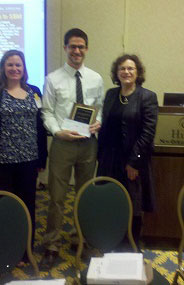
(left to right) Karen Oliver (Co-Chair), Job Godino (Awardee), Sherri Sheinfeld Gorin (Co-Chair) of EBBM SIG.
This year, we presented our second annual "Outstanding Student/Trainee Award in Evidence-Based Behavioral Medicine," alongside a $250 honorarium, to Job G. Godino, MS (see photo below). Mr. Godino presented a synopsis of his abstract, "Impact of personalized physical activity (PA) feedback on objectively measured PA (the FAB study): a randomized controlled trial" at our breakfast roundtable. The award honors students/trainees whose presentation at the SBM Annual Meeting contributes important evidence to the field of behavioral medicine. Under the able leadership of Amy Janeck, PhD, each student/trainee abstract was rigorously evaluated by the following reviewers: Matthew P. Buman, PhD, Kerstin E.E. Schroder, PhD, Karen Oliver, PhD, and Sherri Sheinfeld Gorin, PhD.
Over the coming year, in addition to planning the EBBM SIG's contributions to the SBM Annual Meeting, we will continue to enhance our connection to the EBBM Committee perhaps through a coordinated systematic review. We also plan to meet with SBM's Scientific and Professional Liaison Council (SPLC) to explore affiliations with other national and international organizations that hold similar missions. Given the methodologic skills of many of our members, we will again encourage EBBM SIG involvement in the Consultation Program (developed by the Education, Training, and Career Development Council), broadening mentoring opportunities for other SBM members.
Finally, we will soon be requesting nominations for Co-Chair, as Dr. Sherri Sheinfeld Gorin's term ends next year. Please consider helping to lead the EBBM SIG into the future.
We welcome your involvement in the rapidly growing EBBM SIG, and urge you to contribute to our work on the listserv.
The Evidence-Based Behavioral Medicine SIG connects an interdisciplinary group of professionals from all over the world with interests in health promotion, disease prevention, health care, behavioral and psychosocial interventions, and research methodology. While we're a heterogeneous group, we share an interest in one or more of the following areas:
(1) Creating an evidence base that allows us to compare treatments, evaluate intervention effects and efficiency, and choose the most promising and feasible intervention strategy for specific client(s). Our members are interested in creating and evaluating guidelines for the conduct and report of randomized controlled trials and other systematic research, conducting meta-analyses and assessing their results, and guiding practitioners in the use of evidence with their clients.
(2) Improving research methodology by educating members about the strengths and weaknesses of research strategies and statistical solutions; fostering critical thinking and a rigorous evaluation of the available literature; and discussing how to improve the quality of both the evidence base and evidence-based practice decisions.
(3) Translating evidence-based knowledge into evidence-based behavioral practice (EBBP), including: searching the literature; finding the most relevant evidence; and assisting with decision-making around the most promising treatment strategies for client(s).
References
- Sheinfeld Gorin S, Krebs P, Badr H, Jancke EA, Jim HS, Spring B, Mohr DC, Berendsen MA, Jacobsen PB. Meta-analysis of psychosocial interventions to reduce pain in patients with cancer. J.Clin Oncol. 2012 Feb 10;30(5):539-47.
- Hart SL, Hoyt MA, Diefenbach M, Anderson DR, Kilbourn KM, Craft LL, Steel JL, Cuijpers P, Mohr DC, Berendsen M, Spring B, Stanton AL. Meta-analysis of efficacy of interventions for elevated depressive symptoms in adults diagnosed with cancer. Journal of the National Cancer Institute. (in press).
SBM Around the World - International Research Conducted by Physical Activity SIG Members
Sandra J. Winter, PhD, Physical Activity SIG Outlook Liaison
 This Outlook article highlights some of the impressive international research activities being conducted by SBM Physical Activity Special Interest Group (PA SIG) around the world.
This Outlook article highlights some of the impressive international research activities being conducted by SBM Physical Activity Special Interest Group (PA SIG) around the world.
In Malaysia, Loh Siew Yim, PhD, from the University of Malaya Medical Center has studied the potential benefits of Qigong on the Quality of Life (QoL) among breast cancer patients. Qigong is a Chinese form of exercise that aligns breath, movement, and awareness for exercise, healing, and meditation. The study found that individuals randomized to the Qigong group had improved QoL scores from baseline to post-intervention compared to individuals assigned to receive usual care or a placebo intervention. Dr. Loh's team has also explored the perceptions, barriers, and facilitators of physical activity among breast cancer patients and used this information to design an advertising campaign to encourage physical activity in this population.
In Australia, Paul Gardiner, PhD, from the University of Queensland has conducted innovative work aimed at understanding and influencing sedentary behavior in older adults. He reports a link between sedentary behavior and cardiometabolic health in older adults. Part of this work included a pilot study demonstrating that it is feasible to change sedentary behavior in the short term. The pilot study - Stand Up For Your Health - was delivered over a 2-week period and used behavioral modification techniques including goal setting and tailored feedback to encourage 59 volunteers aged 60 years and older to reduce sedentary time. The results were encouraging with average sedentary time being reduced by over 30 minutes per day.
In Mexico, Lucie Lévesque, PhD, from Queen's University in Canada is leading a multi-national team (Canada, Mexico and the USA) that is assessing the implementation and impact of the Mexican National Guidelines for Action in Schools, a comprehensive policy aimed at improving physical activity and eating opportunities for school children. Funded by the Canadian Institutes for Health Research, Dr. Lévesque is working closely with the Ministries of Health and Education in Mexico City.
Also in Mexico and in collaboration with Dr. Lévesque, Fulbright scholar Rebecca E. Lee, PhD, of the University of Houston has been working with the University of Guadalajara to measure physical activity, dietary habits, and body composition of 2,400 children in 40 schools in Mexico City, Guadalajara, and Puerto Vallarta. She has also conducted environmental audit assessments of physical activity, pedestrian and cycling resources in surrounding neighborhoods. Dr. Lee is also the lead investigator of the NCI/NIH funded Multinational Collaboration to Increase Physical Activity in Hispanics, a project that includes other SBM members and fellows. This work involves conducting critical reviews of the existing research, programs and information promoting physical activity in Mexico and among Mexican Americans to develop consensus and recommendation statements.
In Latin America, researchers at the Stanford Prevention Research Center, led by Abby C. King, PhD, are adapting health information technologies (Smartphone apps, computer tablets and touch-screen monitors) developed in the U.S. to promote physical activity in older adults. In his work with the Centers for Disease Control and Prevention-funded Healthy Aging Research Network, PA SIG Chair, David X. Marquez, PhD, from the University of Illinois at Chicago is establishing collaborations with research partners in Latin America. He is also engaged in collaborative research with the Institute of Geriatrics in Mexico regarding the health of older adults.
These are just a few of the ways that PA SIG members are harnessing behavioral medicine principles to improve global health. How can your work have global reach and impact?
SBM Members Come Together to Establish a New SIG: Military and Veterans' Health
Capt Amanda McCorkindale, PsyD, Military and Veterans' Health SIG Outlook Liaison
At the 2012 Annual Meeting & Scientific Sessions in New Orleans, the newly formed Military and Veterans' Health Special Interest Group (MVH SIG) had its first official meeting and is now fully established as one of SBM's newest SIGs. With the goal of promoting health within the unique health care systems of the Department of Veterans Affairs (VA) and the Department of Defense (DoD), this interdisciplinary SIG elected co-chairs to represent both the VA and the DoD. Patricia H. Rosenberger, PhD, was elected to serve a one-year term and represent the VA, while Capt Michael Ann Glotfelter, MS, was elected to represent the DoD serving a two-year term.
Strategies for enhancing communication among members were also discussed, and David E. Goodrich, EdD (VA), Capt Amanda McCorkindale, PsyD (DoD), and Capt JoLyn Tatum, PhD (DoD), volunteered to serve in the capacity of communication officers. It was agreed that MVH SIG would aim to schedule quarterly calls where all SIG members would have the opportunity to discuss timely new topics and issues, share their work, and develop programming for the annual conference. Because VA and DoD are currently undergoing a rapid transformation of healthcare services that includes new behavioral medicine programs and services, a key a goal for the MVH SIG is to facilitate communication and dissemination of information via email, Facebook, listserv, and SBM directories.
The MVH SIG also discussed its plans for the 2013 conference in San Francisco. Ideas were generated for possible pre-meeting educational offerings as well as student and presentation awards to foster professional development. The MVH SIG hopes to sponsor a poster session as a way of promoting research in the health of active military members and veterans. Membership dues and designation of funds toward the MVH SIG were discussed as ways for funding these activities. Finally, the MVH SIG intends to reach out to other SIGs to collaborate on research, presentations, and symposiums for the next conference.
The MVH SIG invites all SBM members to join them in their commitment to promoting research, prevention efforts, policy development, and education and training with the goal of translating evidence-based behavioral medicine interventions into clinical care for all military service members, (both active duty and veterans) and their families. Improving health outcomes through the promotion of innovative practices and evaluation procedures as well as improving the access to quality, cost-effective care is the MVH SIG's goal. We invite any interested members to join the MVH SIG by contacting Capt Michael Ann Glotfelter at Michael.Glotfelter@afncr.af.mil.
Religious and Spiritual Phenomena are Relevant to Virtually All Areas of Health
Crystal L. Park, PhD, & Amy B. Wachholtz, PhD, MDiv, Spirituality & Health SIG Co-Chairs
 In recent years, research on the links between religion/spirituality (R/S) and physical health has increased dramatically in both sophistication and sheer volume (see Masters & Hooker, in press, for a review). The importance and applicability of R/S to physical health have yet to be recognized by the broader health research community, but the fact is that aspects of R/S cut across virtually every area of health research and are therefore highly germane to all members of SBM. Further, evidence suggests that patients are more frequently integrating their spiritual practices, such as prayer, into traditional medical practices (Wachholtz & Sambamthoori, 2011). In this brief article, we present a sampling of linkages to some major areas of health with the goal of stimulating interest and perhaps spurring new research and collaborations with those outside of our SIG. Importantly, the measurement of spirituality in health research has advanced far beyond frequency of church attendance or general rating of levels of spirituality; researchers now generally acknowledge the multiple distinct dimensions of religion and spirituality.
In recent years, research on the links between religion/spirituality (R/S) and physical health has increased dramatically in both sophistication and sheer volume (see Masters & Hooker, in press, for a review). The importance and applicability of R/S to physical health have yet to be recognized by the broader health research community, but the fact is that aspects of R/S cut across virtually every area of health research and are therefore highly germane to all members of SBM. Further, evidence suggests that patients are more frequently integrating their spiritual practices, such as prayer, into traditional medical practices (Wachholtz & Sambamthoori, 2011). In this brief article, we present a sampling of linkages to some major areas of health with the goal of stimulating interest and perhaps spurring new research and collaborations with those outside of our SIG. Importantly, the measurement of spirituality in health research has advanced far beyond frequency of church attendance or general rating of levels of spirituality; researchers now generally acknowledge the multiple distinct dimensions of religion and spirituality.
Cardiovascular and R/S. Cardiovascular health and R/S research has shown the intricacies of the links between psycho-physiological, spiritual, and cardiac health. General spirituality has limited predictive validity on cardiovascular health (Blumenthal, et al, 2007). However, research on specific religious coping strategies shows that greater specificity in measurement, leads to more useful results. For example, people who use positive religious coping prior to cardiac surgery are likely to have better short-term positive global functioning after surgery (Ai, Peterson, Bolling, & Rodgers, 2006).
Pain and R/S. Researchers are also beginning to better understand the complex relationship between pain and spirituality. Early studies provided evidence that religious and spiritual coping can reduce the pain experience. More recent research shows that it is not just the pain level that changes, but that positive spiritual strategies improve the ability to cope with pain and increase functional status, even if pain levels do not change (Wachholtz, Pearce, & Koenig, 2007).
R/S and Cancer. Most research on R/S and cancer has not demonstrated effects directly on cancer incidence or survival or morbidity (with the exceptions of lifestyle links noted below), but many aspects of R/S have been shown to relate to better psychological well-being and higher health-related quality of life (see Park, in press, for a review).
R/S and Health Behaviors. Strong links between R/S and lower levels of health risk behaviors such as alcohol, tobacco, and illicit drug use have long been noted (e.g., Park, 2012). R/S has been less strongly related to other aspects of a healthy lifestyle such as exercise and diet. Some recent research has demonstrated links between preventive health behaviors such as vaccines (Benjamins & Brown, 2004).
Aging and R/S. Many studies have found that R/S can serve important roles in the health and well-being of older adults. For example, a study of older hospitalized adults followed for approximately two years found that, over time, positive religious coping was associated with better general health while negative religious coping predicted increased morbidity and mortality (Pargament, Koenig, Tarakeshwar, & Hahn, 2004).
We present this brief review of research linking R/S and physical health in the hope of spurring increased attention to and interest in R/S by health researchers. For those whose interest is piqued, we encourage you to read much, much more. If you are interested in collaborating on future projects, please feel free to contact us (crystal.park@uconn.edu, amy.wachholtz@umassmemorial.org), we will be happy to put you in touch with Spirituality SIG group members who share your interests. We look forward to continued development of this field as well as increased integration of the multidimensional phenomena of R/S into many different areas of health.
References:
Ai, A.L., Peterson, C., Bolling, S.F., & Rodgers, W. (2006). Depression, faith-based coping, and short-term postoperative global functioning in adult and older patients undergoing cardiac surgery. Journal of Psychosomatic Research, 60, 21-28.
Benjamins, M. R., & Brown, C. (2004). Religion and preventative health care utilization among the elderly. Social Science and Medicine, 58, 109-118.
Blumenthal, J.A., Babyak, M.A., Ironson, G., Thoresen, C., Powell, L., et al. (2007). Spirituality, religion, and clinical outcomes in patients recovering from an acute myocardial infarction. Psychosomatic Medicine, 69, 501-508.
Masters, K. S., & Hooker, S. A. (in press). Religion, spirituality, and health. Handbook of the psychology of religion and spirituality (2nd ed.). In R. F. Paloutzian & C. L. Park (Eds.) New York: Guilford.
Pargament, K.I., Koenig, H.G., Tarakeshwar, N., & Hahn, J. (2004). Religious coping methods as predictors of psychological, physical and spiritual outcomes among medically ill elderly patients: A two-year longitudinal study. Journal of Health Psychology, 9, 713-730.
Park, C. L. (2012). Meaning, spirituality, and growth: Protective and resilience factors in health and illness (pp. 405-430). In A. S. Baum, T. A., Revenson, & J. E. Singer (Eds.), Handbook of health psychology, Second Edition. New York: Sage.
Park, C. L. (in press). Spirituality and meaning making in cancer survivorship. In K. Markman, T. Proulx, T., & M. Lindberg (Eds.), The psychology of meaning. Washington, DC: American Psychological Association.
Wachholtz, A.B., Pearce, M.J., & Koenig, H.G. (2007). Exploring the Relationship between Spirituality, Coping, and Pain. Journal of Behavioral Medicine, 30, 311-318.
Wachholtz, A.B., & Sambamthoori, U. (2011). National Trends in Prayer Use as a Coping Mechanism for Health concerns: Changes From 2002 to 2007. Psychology of Religion and Spirituality, 3, 67-77.
Weighing in on the "War on Women"
Zaje A.T. Harrell, PhD, and Cashuna T. Huddleston, MA, Women's Health SIG Outlook Liaisons
Reframing Women's Health Policy
A few years ago there was some discussion at the annual meeting of the Society of Behavioral Medicine as to whether the Women's Health Special Interest Group was still relevant. Fast forward a few years and an election cycle and women's health issues are again in the news in the form of debates over contraceptive coverage and funding of preventive health services. Granted, the larger popular discussion of the "War on Women" has been divisive and partisan, however, it has served to highlight the importance of women's health. Unfortunately, recent public discussion of women's health issues has focused on issues related to women's reproductive health to the exclusion of broader issues. The cultural conversation about women's lives and choices is making women's health research even more relevant.
Consistent with SBM's efforts to increase our visibility in the policy arena (https://www.sbm.org/about/public-policy), current debates about women's health issues present unique opportunities for SBM researchers to weigh in more broadly about women's wellness. There is also an opportunity to change the conversation. The popular narrative of women's health focuses on women during their child bearing years with little attention paid to social context. We propose focusing on women's health across the lifespan in the context of social status. We also argue that there needs to be an increase in the visibility and input of women's health researchers to aid in informing public policies.
Lifespan and Women's Health
Women's health should be considered from girlhood through older adulthood. The range of needs of women will shift and change throughout that time in terms of the type of primary, preventive and curative care needs. Thus, the concepts of women's health should be considered as they occur across the lifespan. While many of the controversies in women's health focus on issues related to sexuality, there are other topics that are important to consider. The Women's Health SIG can help to contribute to a more rational and evidence-based discussion of women's health by framing issues related to sexuality and health as just one critically important area of women's health. However, it is also important to address gender issues and equity in our tackling of other health related issues such as chronic disease prevention, disease management, and access to care.
Social Status and Women's Health
Women's social status affects health outcomes. Research on health disparities points to the intersection of gender, race and social status as critically important: poor women and ethnic minority women are at higher risk for certain diseases (i.e., cerebrovascular disease, obesity) and poor health outcomes. Furthermore, the experience of sexism in our culture has an influence on women's well-being and access to resources. For example, fair pay remains elusive for American women. Experiences of gender-based harassment and discrimination are also far too common place and can result in mental health consequences. According to Dr. NiCole Buchanan, a clinical psychologist whose research focuses on sexual and racial harassment, there are a number of conditions including posttraumatic stress, anxiety and depression that result from experiences of discrimination. She also notes that: "The physical health effects are equally broad ranging from pregnancy complications and increased infant mortality, chronic headaches, sleep disturbances, high blood pressure and even heart disease" (N. Buchanan, personal communication, June 5, 2012).
Increasing the Profile of Women's Health Researchers
Finally, it is important to note that the Women's Health SIG provides a wealth of resources in terms of researchers and practitioners who have expertise in chronic disease, lifespan health and health disparities. In February 2012, when a congressional panel on contraception was convened with no female members, there was a public outcry. Women's health research benefits from scientists who can set a research agenda and also speak to policy issues. Dr. Isis Settles, a social psychologist who studies women scientists, posits that "One positive thing is that the experiences of women in the sciences is at the forefront for many individuals, institutions, and organizations, so there are many of us working to figure out ways to improve their experiences so that more women can enter the sciences and reach the highest levels" (I. Settles, personal communication, June 5, 2012). There needs to be a bridge between the scientific community and policy makers in women's health. SBM members can play a role in building this bridge by supporting female scientists to reach the highest levels in their respective fields and by becoming more visible in guiding an evidence-based conversation about women's health.
Reference
1. http://abcnews.go.com/blogs/politics/2012/02/birth-control-hearing-was-like-stepping-into-a-time-machine/. Accessed: 2012-06-14. (Archived by WebCite® at http://www.webcitation.org/68Q9sFsfL)
Newest Articles from Annals of Behavioral Medicine and Translational Behavioral Medicine
SBM's two journals, Annals of Behavioral Medicine and Translational Behavioral Medicine (TBM), continuously publish articles online, many of which become available before issues are printed.
SBM members who have paid their 2012 membership dues are able to access the full text of all Annals and TBM articles via the SBM website by following the steps below.
- Go to the Members Only section of the SBM website: https://www.sbm.org/membership/members
- Log in with your username and password
- Click on the Journals link (listed fourth in the list of Member Benefits)
- Click on the title of the journal which you would like to electronically access
To check if you are a current member of SBM, or if you are having trouble accessing the journals online, please contact the national office at info@sbm.org or 414-918-3156.
The Five most recently published Annals and TBM articles online are listed below.
Annals of Behavioral Medicine
Social Influence and Adolescent Health-Related Physical Activity in Structured and Unstructured Settings: Role of Channel and Type
Authors: Kevin S. Spink, Kathleen S. Wilson and Jocelyn Ulvick
Abstract: Social influence channels (e.g., parents) and types (e.g., compliance) have each been related to physical activity independently, but little is known about how these two categories of influence may operate in combination. This study examined the relationships between various combinations of social influence and physical activity among youth across structured and unstructured settings. Adolescents (N = 304), classified as high or low active, reported the social influence combinations they received for being active. Participants identified three channels and three types of influence associated with being active. For structured activity, compliance with peers and significant others predicted membership in the high active group (values of p < .001). In the unstructured setting, peer compliance (p = .009) and conformity (p = .019) were associated with active group membership. These findings reinforce considering both setting, as well as the channel/type combinations of social influence, when examining health-related physical activity.
Erratum to: Predicting Human Papillomavirus Vaccine Uptake in Young Adult Women: Comparing the Health Belief Model and Theory of Planned Behavior
Authors: Mary A. Gerend and Janet E. Shepherd
Abstract: None. See full article.
Childhood Abuse and Inflammatory Responses to Daily Stressors
Authors: Jean-Philippe Gouin, Ronald Glaser, William B. Malarkey, David Beversdorf and Janice K. Kiecolt-Glaser
Abstract: Childhood abuse leads to greater morbidity and mortality in adulthood. Dysregulated physiological stress responses may underlie the greater health risk among abused individuals. This study evaluated the impact of childhood abuse on inflammatory responses to naturalistically occurring daily stressors. In this cross-sectional study of 130 older adults, recent daily stressors and childhood abuse history were evaluated using the Daily Inventory of Stressful Events and the Childhood Trauma Questionnaire. Blood samples provided data on circulating interleukin-6 (IL-6), tumor necrosis factor-α (TNF-α), and C-reactive protein (CRP). Childhood abuse history moderated IL-6 levels but not TNF-α and CRP responses to daily stressors. Individuals with a childhood abuse history who experienced multiple stressors in the past 24 h had IL-6 levels 2.35 times greater than those of participants who reported multiple daily stressors but no early abuse history. Childhood abuse substantially enhances IL-6 responses to daily stressors in adulthood.
You are the Weakest Link, Goodbye (to Physical Inactivity!): A Comment on Irwin et al.
Authors: Paul A. Estabrooks and Mark R. Beauchamp
Abstract: None. See full article
Multisystemic Therapy Compared to Telephone Support for Youth with Poorly Controlled Diabetes: Findings from a Randomized Controlled Trial
Authors: Deborah A. Ellis, Sylvie Naar-King, Xinguang Chen, Kathleen Moltz and Phillippe B. Cunningham, et al.
Abstract: Few interventions have effectively improved health outcomes among youth with diabetes in chronic poor metabolic control. This study aims to determine whether multisystemic therapy (MST), an intensive, home-based, tailored family treatment, was superior to weekly telephone support for improving regimen adherence and metabolic control among adolescents with chronic poor metabolic control. A randomized controlled trial was conducted with 146 adolescents with types 1 or 2 diabetes. Data were collected at baseline, 7 months (treatment termination), and 12 months (6 months follow-up). Adolescents receiving MST had significantly improved metabolic control at 7 (1.01 % decrease) and 12 months (0.74 % decrease) compared to adolescents in telephone support. Parents of adolescents receiving MST reported significant improvements in adolescent adherence. However, adolescent-reported adherence was unchanged. MST improved health outcomes among adolescents with chronic poor metabolic control when compared to telephone support. Home-based approaches may provide a viable means to improve access to behavioral interventions for such youth.
Translational Behavioral Medicine
News from the CDC: Integrating Behavioral Health into the Patient-Centered Medical Home
Authors: Farah M Chowdhury, Michael Kulcsar, Siobhan Gilchrist and Nikki A Hawkins
Abstract: None. See full article
News from NIH: the patient-centered medical home
Authors: Bradford W Hesse, Wendy J Nilsen and Christine M Hunter
Abstract: None. See full article
Mental health, substance abuse, and health behavior intervention as part of the patient-centered medical home: a case study
Authors: Jessica Young, Jennifer Gilwee, Melissa Holman, Randall Messier and Mark Kelly, et al.
Abstract: Currently integrating mental health, substance abuse, and health behavior into Patient-Centered Medical Homes (PCMH) is being advocated with increasing frequency. There are no current reports describing efforts to accomplish this. A theory-based project was developed to integrate mental health, substance abuse, and health behavior services into the fabric and culture of an NCQA-certified level-three PCMH using funding from the Vermont legislature. A mixed methods case report of data from the first 34 months reviews planning, development, implementation, care model, information technology (IT), and data collection, and reports results using the elements of a RE-AIM framework. Early accomplishment of most RE-AIM dimensions is observed. Implementation remains a struggle, specifically the questions of role responsibilities, form, and financing. This effort is a successful pilot implementation of the Primary Care Behavioral Health (PCBH) model in the PCMH with the potential for dissemination toward additional implementation and a model for a comparative effectiveness trial.
Integrating behavioral health services within military health system: a model for opportunities and challenges
Authors: Amy A. Eyler
Abstract: Policy Brief. See full article.
Process of diffusing cancer survivorship care into oncology practice
Authors: Irene Tessaro, Marci K Campbell, Shannon Golden, Mindy Gellin and Mary McCabe, et al.
Abstract: The LIVESTRONG Centers of Excellence were funded to increase the effectiveness of survivorship care in oncology practice. This study describes the ongoing process of adopting and implementing survivorship care using the framework of the diffusion of innovation theory of change. Primary data collection included telephone interviews with 39 members from the eight centers and site visits. Organizational characteristics, overall progress, and challenges for implementation were collected from proposals and annual reports. Creating an awareness of cancer survivorship care was a major accomplishment (relative advantage). Adoption depended on the fit within the cancer center (compatibility), and changed over time based on trial and error (trialability). Implementing survivorship care within the existing culture of oncology and breaking down resistance to change was a lengthy process (complexity). Survivorship care became sustainable as it became reimbursed, and more new patients were seen (observability). Innovators and early adopters were crucial to success. Diffusion of innovation theory can provide a strategy to evaluate adoption and implementation of cancer survivorship programs into clinical practice.
Honors, Awards and Publications
Awards / Honors
Cheryl L Albright, PhD, MPH
Dr. Albright has been promoted to Professor at the University of Hawaii at Manoa. In addition, she recently transferred within the University and now has a joint appointment in the School of Nursing and in the Office of Public Health Studies at the John A Burns School of Medicine.
Patricia Dolan Mullen, DrPH
Dr. Dolan Mullen was awarded the University of Texas Health Science Center at Houston President's Scholar Award for Teaching in May, and she will receive a University of Texas Regents' Award for Teaching Excellence in July. This recognition was founded on training grants she directs and on her leadership in assembling a network of resources to support systematic reviews and evidence-based practice.
Blair T. Johnson, PhD
Dr. Johnson, a Professor of Psychology and Principal Investigator at the Center for Health, Intervention, and Prevention located at the University of Connecticut, was elected Secretary-Treasurer for the Society for the Psychological Study of Social Issues (SPSSI), a division of the American Psychological Association. SPSSI promotes research focusing on the psychological aspect of social, economical and political policy issues. He has also recently been named a Distinguished Alumnus from Minnesota State University Moorhead during the Red River Psychology Conference.
Amanda McCorkindale, PsyD
Dr. McCorkindale was awarded the Society of Air Force Psychologists' "Company Grade Officer (CGO) Psychologist of the Year" award at the 2012 Operational Problems in Behavioral Sciences Symposium held in May in San Antonio, TX.
Kymberlee M. O'Brien, PhD
Dr. O'Brien was named as a 2012 Harvard University Sackler Scholar in Psychobiology.
Publications
Alfonso ML, Nickelson J, Cohen D. Farmers' markets in rural communities: A case study. Am J Health Educ. 2012;43(3):143-151.
Becker J, Dew MA, Aizenstein H, Lopez O, Morrow L, Saxton J, et al. A pilot study of the effects of internet-based cognitive stimulation on neuropsychological function in HIV disease. Disabil Rehabil. 2012 March 30. [Epub ahead of print]. PubMed PMID: 22458375.
Bertone-Johnson ER, Powers SI, Spangler L, Larson JC, Michael YL, Millen AE, et al. Vitamin D supplementation and depression in the Women's Health Initiative Calcium and Vitamin D Trial. Am J Epidemiol. Epub 2012 May 05. PubMed PMID: 22573431.
Bonner JE, Esserman D, Evon D. Reliability and validity of a self-efficacy instrument for hepatitis C antiviral treatment regimens. J Viral Hepat. 2012 May;19(5):316-26. PubMed PMID: 22497810.
Bonner JE, Barritt AS, Fried M, Evon D. Time to rethink antiviral treatment for hepatitis C in patients with coexisting mental health/substance abuse issues. Dig Dis Sci. 2012 Jun; 57(6):1469-74. PubMed PMID: 22484494.
Bonner JE, Barritt AS, Fried MW, Evon DE. Tangible resources for preparing patients for antiviral therapy for chronic hepatitis C. Dig Dis Sci. 2012 Jun;57(6):1439-44. PubMed PMID: 22488633.
Brown SD, Lee K, Schoffman DE, King AC, Crawley LM, Kiernan M. Minority recruitment into clinical trials: Experimental findings and practical recommendations. Contemp Clin Trials. 2012 Jul;33(4):620-3. PubMed PMID: 22449836.
Bruns D, Mueller K, Warren PA. Biopsychosocial law, health care reform, and the control of medical inflation in Colorado. Rehabil Psychol. 2012 May 12;57(2):81-97. PubMed PMID: 22686548.
Carlson LE, Waller A, Mitchell AJ. Screening for distress and unmet needs in patients with cancer: Review and Recommendations. J Clin Oncol. 2012 Apr 10;30(11):1160-77. PubMed PMID: 22412146.
Conboy L, St John M, Schnyer R. The effectiveness of acupuncture in the treatment of Gulf War Illness. Contemp Clin Trials. 2012 May;33(3):557-62. PubMed PMID:22349455.
Cox LS, Nollen NL, Mayo MS, Choi WS, Faseru B, Benowitz NL, et al. Bupropion for smoking cessation in African American light smokers: A randomized controlled trial. J Natl Cancer Inst. 2012 Feb 22;104(4):1-9. PubMed PMID: 22282543.
Dew MA, DiMartini AF, DeVito Dabbs AJ, Fox KR, Myaskovsky L, Posluszny DM, et al. Onset and risk factors for anxiety and depression during the first two years after lung transplantation. Gen Hosp Psychiatry. 2012 Mar-Apr;34(2):127-138. PubMed PMID: 22245165.
Dunton GF, Liao Y, Almanza E, Jerrett M, Spruijt-Metz D, Chou CP, et al. Joint physical activity and sedentary behavior in parent-child pairs. Med Sci Sports Exerc. 2012 Feb 23. [Epub ahead of print] PubMed PMID: 22367744.
Dunton GF, Kawabata K, Intille S, Wolch J, Pentz MA. Assessing the social and physical contexts of children's leisure-time physical activity: an ecological momentary assessment study. Am J Health Promot. 2012 Jan-Feb;26(3):135-42. PubMed PMID: 22208410.
Dunton GF, Intille SS, Wolch J, Pentz MA. Children's perceptions of physical activity environments captured through ecological momentary assessment: A validation study. Prev Med. 2012 May 30. [Epub ahead of print] PubMed PMID: 22659225.
Esplen MJ, Hunter J, Kash KM. The need for psychosocial support in genetic counselling and genetic testing. West Sussex UK: Wiley-Blackwell; 2012. Clinical psycho-oncology: an international perspective; p. 223-36.
Fishbain DA, Bruns D, Meyer LJ, Lewis JE, Gao J, Disorbio JM. Exploration of the relationship between disability perception, preference for death over disability, and suicidality in patients with acute and chronic pain. Pain Med. 2012 Apr;13(4):552-61. PubMed PMID: 22487542.
Fishbain DA, Lewis JE, Bruns D, Gao J, Disorbio JM, Meyer L. Patient predictor variables for six forms of suicidality. Eur J Pain. 2012 May;16(5):706-17. PubMed PMID: 22337569.
Garand L, Lingler JH, Deardorf KE, DeKosky ST, Schulz R, Reynolds CF III, et al. Anticipatory grief in new family caregivers of persons with mild cognitive impairment and dementia. Alzheimer Dis Assoc Disord. 2012 Apr;26(2):159-165. PubMed PMID: 21946013.
Garland SN, Tamagawa R, Todd SC, Speca M, Carlson LE. Increased Mindfulness is Related to Improved Stress and Mood Following Participation in a Mindfulness-Based Stress Reduction (MBSR) Program in Individuals with Cancer. Integr Cancer Ther. 2012 Apr 13. epub ahead of print April. PubMed PMID: 22505593.
Gibson B, Marcus R, Staggers N, Jones J, Samore M, Weir C. Efficacy of a Computerized Simulation in Promoting Walking in Individuals with Diabetes. J Med Internet Res. 2012 May 10;14(3):e71. PubMed PMID: 22576226.
Grady KL, Dew MA. Mechanical Circulatory Support: A Companion to Braunwald's Heart Disease, A Textbook of Cardiovascular Medicine. 1st ed. Philadelphia: Elsevier; 2012. Psychosocial issues in mechanical circulatory support; p. 194-205.
Hamilton JG, Lobel M. Passing years, changing fears? Conceptualizing and measuring risk perceptions for chronic disease in younger and middle-aged women. J Behav Med. 2012 Apr;35(2):124-38. PubMed PMID: 21487721.
Hauer KE, Carney PA, Chang A. Satterfield JM. Behavior Change Counseling Curricula for Medical Trainees: A Systematic Review. Acad Med 2012; 87(7):1-12. PubMed PMID: 22622220.
Heckman CJ, Cohen-Filipic J. Ultraviolet Radiation Exposure, Considering Acculturation Among Hispanics (Project URECAH). J Cancer Educ. 2012 Jun;27(2):342-6. PubMed PMID: 22228464.
Huedo-Medina TB, Johnson BT, Kirsch I. Kirsch et al.'s (2008) calculations are correct: reconsidering Fountoulakis & Möller's re-analysis of the Kirsch data. Int J Neuropsychopharmacol. 2012 Mar 20:1-6. PubMed PMID: 22433169.
Hui AS, Nazir N, Faseru B, Ellerbeck EF. Ongoing self-engagement in quit attempts and cessation outcomes among rural smokers who were unable to quit after 2 years of repeated interventions. J Rural Health. 2012 May 31. DOI: 10.1111/j.1748-0361.2012.00415.x.
Jakicic JM, Tate DF, Lang W, Davis KK, Polzien K, Rickman AD, Erickson K, Neiberg RH, Finkelstein EA. Effect of a Stepped-Care Intervention Approach on Weight Loss in AdultsA Randomized Clinical Trial. JAMA. 2012 Jun 27;307(24):2617-26. doi:10.1001/jama.2012.6866.
Johnson JA, Lavoie KL, Bacon SL, Carlson LE, Campbell TS. The effect of trait rumination on adaptation to repeated stress. Psychosom Med. 2012 Apr;74(3):258-62. PubMed PMID: 22408131.
Kang EW, Pike F, Ramer S, Abdel-Kader K, Myaskovsky L, Dew MA, et al. The association of mental health over time with cardiac outcomes in HEMO study patients. Clin J Am Soc Nephrol. 2012 Jun;7(6):957-964. PubMed PMID: 22490873.
Kaplan RM, Satterfield JM, Kington RS. Building a Better Physician: The Case for the New MCAT. N Engl J Med. 2012 Apr; 366(14):1265-8. PubMed PMID: 22475589.
Lassche M, Al-Qaaydeh S, Macintosh CI, Black M. Identifying changes in comfort and worry among pediatric nursing students following clinical rotations. J Pediatr Nurs. 2012 Jan 31. [Epub ahead of print] PubMed PMID: 22300523.
Ledoux TA, Mama SK, O'Connor DP, Adamus H, Fraser ML, Lee RE. Home Availability and the Impact of Weekly Stressful Events Are Associated with Fruit and Vegetable Intake among African American and Hispanic/Latina Women. J Obes.2012;2012:737891. Epub 2012 May 14. PubMed PMID: 22666558.
Lee RE, O'Connor DP, Smith-Ray R, Mama SK, Medina AV, Reese-Smith JY, et al. Mediating effects of group cohesion on physical activity and diet in women of color: health is power. Am J Health Promot. 2012 Mar-Apr;26(4):e116-25. PubMed PMID: 22375580.
Lee RE, Mama SK, Lopez Iii Y. Sitting time and cardiometabolic risk factors in African American overweight women. J Obes. 2012;2012:803467. Epub 2012 Apr 19. PubMed PMID: 22577525.
Linde JA, Nygaard KE, MacLehose RF, Mitchell NR, Harnack LJ, Cousins JM, et al. HealthWorks: results of a multi-component group-randomized worksite environmental intervention trial for weight gain prevention. Int J Behav Nutr Phys Act. 2012 Feb 16;9:14. PubMed PMID: 22340088.
McAlexander KM, Mama SK, Medina AV, O'Connor DP, Lee RE. Concordance and correlates of direct and indirect built environment measurement among minority women. AmJ Health Promot. 2012 Mar-Apr;26(4):239-44. PubMed PMID: 22375575.
McCance-Katz E, Satterfield JM. SBIRT: A Key to Integrate Prevention and Treatment of Substance Abuse in Primary Care. Am J Addict. 2012 Mar-Apr; 21(2):176-7. PubMed PMID: 22332862.
Minkler M, Salvatore AL. Dissemination and Implementation Research in Health: Translating Science to Practice. New York: Oxford University Press; 2012. Section 2.10, Participatory approaches for dissemination and implementation research.
Mitchell A, Carlson L, Carter G, Zabora JR, Clover K, Grassi L, et al. Meta-Analysis of Screening and Case Finding Tools for Depression in Cancer: Evidence based Recommendations for Clinical Practice on behalf of the DCC Consensus Group Journal of Affective Disorders. J Affect Disord. 2012 May 24; 140(2):149-60. PubMed PMID: 22633127.
Moller AC, McFadden HG, Hedeker D, Spring B. Financial Motivation Undermines Maintenance in an Intensive Diet and Activity Intervention. J Obes. 2012; 740519. Epub. Apr 2. PubMed PMID:22548152.
Myaskovsky L, Doebler DA, Posluszny DM, Dew MA, Unruh M, Fried LF, et al. Perceived discrimination predicts longer time to be accepted for kidney transplant. Transplantation. 2012 Feb 27;93(4):423-9. PubMed PMID: 22228417.
O'Brien K. Healthy, wealthy, wise? psychosocial factors influencing the socioeconomic status-health gradient. J Health Psychol. 2012 Feb 7. PubMed PMID: 22313667.
Okuyemi KS, Faseru B, Reed G, Cox LS, Bronars CA, Opole I, et al. Effects of Menthol on Bupropion Pharmacokinetics. Nicotine Tob Res. 2012 Jun;14(6):688-93. PubMed PMID: 22318754.
Orgiles M, Espada JP, Johnson BT, Huedo-Medina TB, Carratala E. Sexual behavior in Spanish adolescents of divorced parents. Psicothema. 2012 May; 24(2):211-6. PubMed PMID: 22420347.
Palermo TM. Cognitive-behavioral therapy for chronic pain in children and adolescents. New York, NY: Oxford University Press; 2012. 240 p.
Reynolds CF III, Cuijpers P, Patel V, Cohen A, Dias A, Chowdhary N, et al. Early intervention to reduce the global burden of major depression in older adults. Annu Rev Public Health. 2012 Apr;33:123-135. PubMed PMID: 22429161.
Rosenberger E, Dew MA, Crone C, DiMartini A. Psychiatric disorders as risk factors for adverse medical outcomes after solid organ transplantation. Curr Opin Organ Transplantation. 2012 Apr;17(2):188-92. PubMed PMID: 22277955.
Salani R, Andersen BL. Gynecologic care for breast cancer survivors: Assisting in the transition to wellness. Am J Obstet Gynecol. 2012 May;21;206(5):390-7. PubMed PMID: 22177185.
Salmoirago-Blotcher E, Carmody J, Yeh G, Crawford S, Rosenthal L, Ockene I. Design and methods for a pilot randomized clinical trial of a phone delivered, mindfulness-based intervention to treat anxiety in patients with Implantable Cardioverter Defibrillators (ICD). Evid Based Complement and Alternat Med. Epub ahead of print 2012 April 27. PubMed PMID: 22536294.
Salmoirago-Blotcher E, Crawford S, Tran C, Goldberg R, Rosenthal L, Ockene I. Spiritual well-being may buffer psychological distress in patients with implantable cardioverter defibrillators (ICD). J Evid Based Complementary Altern Med. May 25, 2012. [Epub ahead of print] DOI: 10.1177/2156587212447627. NIHMSID: 378542.
Smith-Ray RL, Mama S, Reese-Smith JY, Estabrooks PA, Lee RE. Improving participation rates for women of color in health research: the role of group cohesion. Prev Sci. 2012 Feb;13(1):27-35. PubMed PMID: 21826476.
Thombs BD, Coyne JC, Cuijpers P, de Jonge P, Gilbody S, Ioannidis JP, et al. Re-rethinking the article by Thombs and colleagues. CMAJ. 2012 Mar 6;184(4):438-9. PubMed PMID: 22393069.
Thombs BD, Coyne JC, Cuijpers P, de Jonge P, Gilbody S, Ioannidis JP, et al. Rethinking recommendations for screening for depression in primary care. CMAJ. 2012 Mar 6;184(4):413-8. PubMed PMID: 21930744.
Trost Z, Vangronsveld K, Linton S, Sullivan MJL, Quartana JM. Topical review: Cognitive dimensions of anger in chronic pain. Pain. 2012 Mar 153(3):515-7. PubMed PMID: 22136750.
Waller A, Groff SL, Hagen N, Bultz BD, Carlson LE. Characterizing Distress, the 6th Vital Sign, in an Oncology Pain Clinic. Curr Oncol. 2012 Apr;19(2):e53-9. PubMed PMID: 22514497.
Waters EA, McNeel TS, McCaskill-Stevens, Freedman AN. Breast Cancer Res Treat. 2012 May 24. PubMed PMID: 22622807.
Wilson PL, O'Connor DP, Kaplan CD, Bode S, Mama SK, Lee RE. Relationship of fruit, vegetable, and fat consumption to binge eating symptoms in African American and Hispanic or Latina women. Eat Behav. 2012 Apr;13(2):179-82. PubMed PMID: 22365808.
Zernicke KA, Campbell TS, Blustein PK, Fung TS, Johnson JA, Bacon SL, et al. Mindfulness-Based Stress Reduction for the Treatment of Irritable Bowel Syndrome Symptoms: A Randomized Wait-list Controlled Trial. Int J Behav Med. 2012 May 23. [Epub ahead of print] PubMed PMID: 22618308.
Zuckoff A, Dew MA. Research on MI in equipoise: The case of living organ donation. Motivational interviewing: Training, Research, Implementation, Practice. 2012;1(1):39-41. doi: 10.5195/mitrip.2012.12.
Classified Advertising
Deadline and Rates
To advertise in the Fall 2012 edition of Outlook, please supply ad copy to the SBM National Office. Please contact the National Office for additional information.
Contact:
Benjamin Stumpf
Program Manager
Society of Behavioral Medicine
555 East Wells Street, Suite 1100
Milwaukee, WI 53202-3823
Phone: (414) 918-3156
Fax: (414) 276-3349
E-mail: bstumpf@sbm.org
BOARD OF DIRECTORS
Officers
Alan J. Christensen, PhD
President
Dawn K. Wilson, PhD
President-Elect
Abby C. King, PhD
Past-President
Michael A. Diefenbach, PhD
Secretary/Treasurer
Gary G. Bennett, PhD
Member Delegate
Jennifer K. Carroll, MD, MPH
Member Delegate
Sherry L. Pagoto, PhD
Member Delegate
Council Chairs
Laura S. Porter, PhD
Education, Training & Career Development Chair
Brent Van Dorsten, PhD
Membership Chair
Timothy W. Smith, PhD
Publications & Communications Chair
Sara J. Knight, PhD
Scientific & Professional Liaison Chair
Claudio R. Nigg, PhD
Special Interest Groups Chair
Committee Chairs
Laura L. Hayman, RN, PhD, FAAN
Awards Chair
Geoffrey C. Williams, MD, PhD
Development Chair
Paul B. Jacobsen, PhD
Evidence-Based Behavioral Medicine Chair
Michael A. Diefenbach, PhD
Finance Chair
Paul A. Estabrooks, PhD
Health Policy Chair
Abby C. King, PhD
Nominating Chair
Margaret L. Schneider, PhD
Program Chair
Elliot J. Coups, PhD
Program Co-Chair
Melissa A. Clark, PhD
Program Support Chair
Editors
Christopher R. France, PhD
Annals Editor
Bonnie Spring, PhD, ABPP
Translational Behavioral Medicine Editor
Amanda L. Graham, PhD
Outlook Editor
Ellen Beckjord, PhD
Website Editor
Please send Outlook correspondence to:
Amanda L. Graham, PhD
Editor, SBM Outlook
E-mail: agraham@americanlegacy.org
Guidelines for Articles submitted to Outlook
- Articles should be no longer than 500 words, plus up to 10 references.
- Please submit only original articles, not articles that have been previously published in another organization's newsletter or bulletin.
- The Outlook editor may edit articles to fit the format of the newsletter, or defer articles to another issue based on space limitations. The submitting author(s) will be informed, prior to publication, and will be sent a copy of any edited article for approval or withdrawal.
- Submitted articles may be reviewed by the Publications and Communications Committee Chair and, potentially, additional SBM Board members to determine appropriateness for publication and/or length.
![]()
SBM National Office
555 East Wells Street, Suite 1100,
Milwaukee, WI 53202-3823
Phone: (414) 918-3156 • Fax: (414) 276-3349 •
E-mail: info@sbm.org • www.sbm.org
Editor: Amanda L. Graham, PhD
Managing Editor: Alicia Sukup
You have received this message because you have had previous contact with the Society of Behavioral Medicine. If you do not wish to be included in our mailing list, please forward this message to info@sbm.org.
